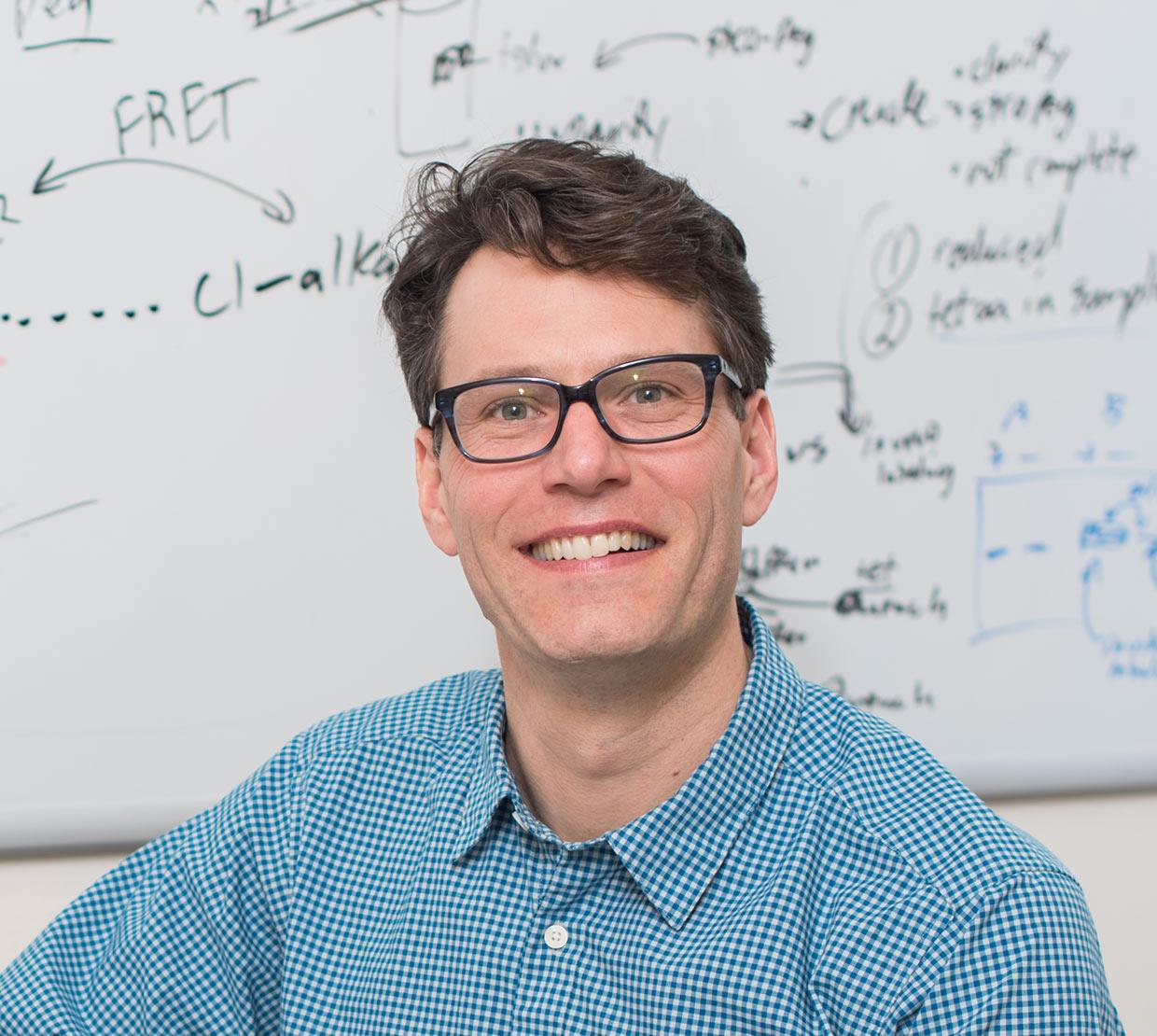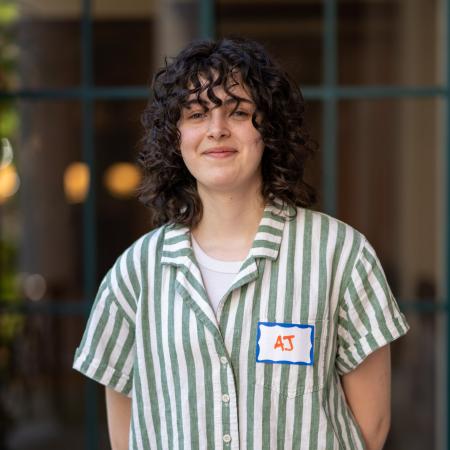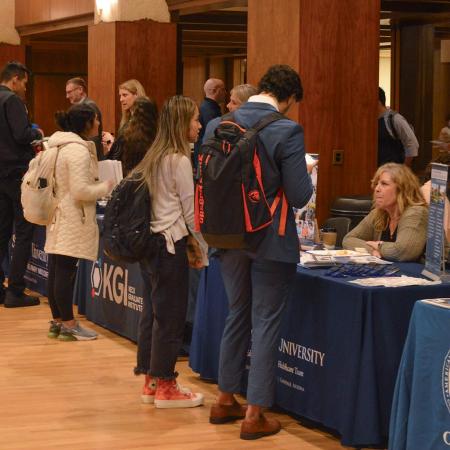Ryan Mehl, associate professor in the Biochemistry and Biophysics Department, has been awarded two prestigious grants for his work on using genetic code expansion to change how we can use and study proteins. Mehl was granted a four-year, $900,835 award by the National Science Foundation for his project, “Genetic encoding of tetrazine amino acids to develop ideal bioorthogonal ligations” as well as a five-year $937,500 award from the National Institutes of Health for his project, “Defining roles of nitroTyrosine in disease via genetic code expansion.”
“Ryan is doing exceptional research in the areas of human health, biotechnology and nanotechnology. He is advancing the frontiers of science and pioneering new ways of doing biochemical studies as evidenced by his NSF and NIH grant awards,” said Sastry G. Pantula, Dean of the College of Science.
“We are very fortunate that the College of Science has excellent faculty like Ryan who are committed to enhancing diversity, to student success and to building the next generation of leaders in science.”
Mehl joined the Oregon State Biochemistry and Biophysics department in 2011. Mehl earned his doctorate at Cornell University in 2001. Previously, he taught and trained undergraduates for eight years at Franklin & Marshall College where he assisted in building their first Biochemistry program. At Oregon State, Mehl runs a research lab and is director of the Unnatural Protein Facility.
The first of its kind in the world, the Unnatural Protein Facility employs a process called genetic code expansion to re-engineer proteins by incorporating non-canonical amino acids (ncAAs). Genetic code expansion adds additional genetic components to cells expanding their genetic code past the natural 20 amino acids giving proteins in living cells hundreds of new chemical abilities. The Facility centralizes these genetic tools, amino acids and methodology for the purposes of academic research and hosts undergraduate and graduate students and scientists from around the world.
“It is the dawn of a new age in protein engineering and researchers, students and industry are now realizing how unnatural proteins will change our futures," said Mehl. “It is exciting because now we start conversations by saying, 'What do you want your protein to do?' instead of focusing on protein limitations.”
The Biochemistry and Biophysics Department has even made the new technology part of its undergraduate curriculum by teaching more than 70 seniors how to engineer and study unnatural proteins each year.
“I love taking a room full of creative undergrad Biochemists and Engineers and letting them design, generate and study proteins the world has never seen before,” said Mehl.
Mehl’s NSF project extends his research on genetic code expansion to generate a bioorthogonal ligation—by developing tetrazine-containing amino acids— that can be used in cells to attach anything to proteins site-specifically thus enabling new avenues of scientific inquiry.
According to Mehl, the speed of the protein modification is key. “We are now fast enough to compete with biology controlling individual protein interactions and locations at the rate of biological events.”
Mehl’s project will have a broad educational and scientific impact. The genetic code expansion tools developed through the project will be used to train scientists and will be distributed via the Unnatural Protein Facility. The program provided fellowships to underrepresented scientists in the first Facility’s workshop this August.
“I am ecstatic the NSF has agreed to provide these fellowships for the next four years,” said Mehl.
His NIH-funded project will study the role of nitroTyr proteins in human disease, such as atherosclerosis, cancer, chronic pain, neurodegeneration and stroke, to discover opportunities for therapeutic intervention. Scientists have found it challenging to determine which nitroTyr modifications are functionally significant and which are inconsequential.
Mehl’s research shows that this hurdle can be overcome by using genetic code expansion technology to quantitatively and site-specifically incorporate nitroTyr in a targeted manner into recombinant proteins produced in bacteria. His work will provide a fundamentally new approach to understand how tyrosine nitration affects disease progression and possible avenues for cures.
Mehl’s awards are particularly impressive and noteworthy because funding rates in many NIH and NSF programs have been at historic lows since 2013 leading to fierce competition and low success rates for researchers applying to grants. In a recent positive turnaround, the NIH maybe receiving its first significant funding increase in more than a decade. A Senate panel approved a bill that would bestow a generous $2 billion increase on the NIH in 2016.
In general, however, federal funding agencies are aiming to balance their restricted budgets with the progress of science in the United States by funding projects keeping certain criteria in mind: the most deserving research, a broad portfolio of scientists and the training of students at a wide range of institutions by research-active scientists.
OSU’s College of Science has had an impactful and productive year for grants and awards in 2014-2015. Research projects by science faculty and researchers have garnered a total of $26 million with NSF (58%) and NIH (15%) being the major sources of funding. Over $ 1 million in grants have been awarded to a diverse range of research projects in COS from environmentally friendly material chemistry research to coral disease studies and the OSU STEM Leaders Program, which fosters undergraduate research through peer and faculty mentoring.




